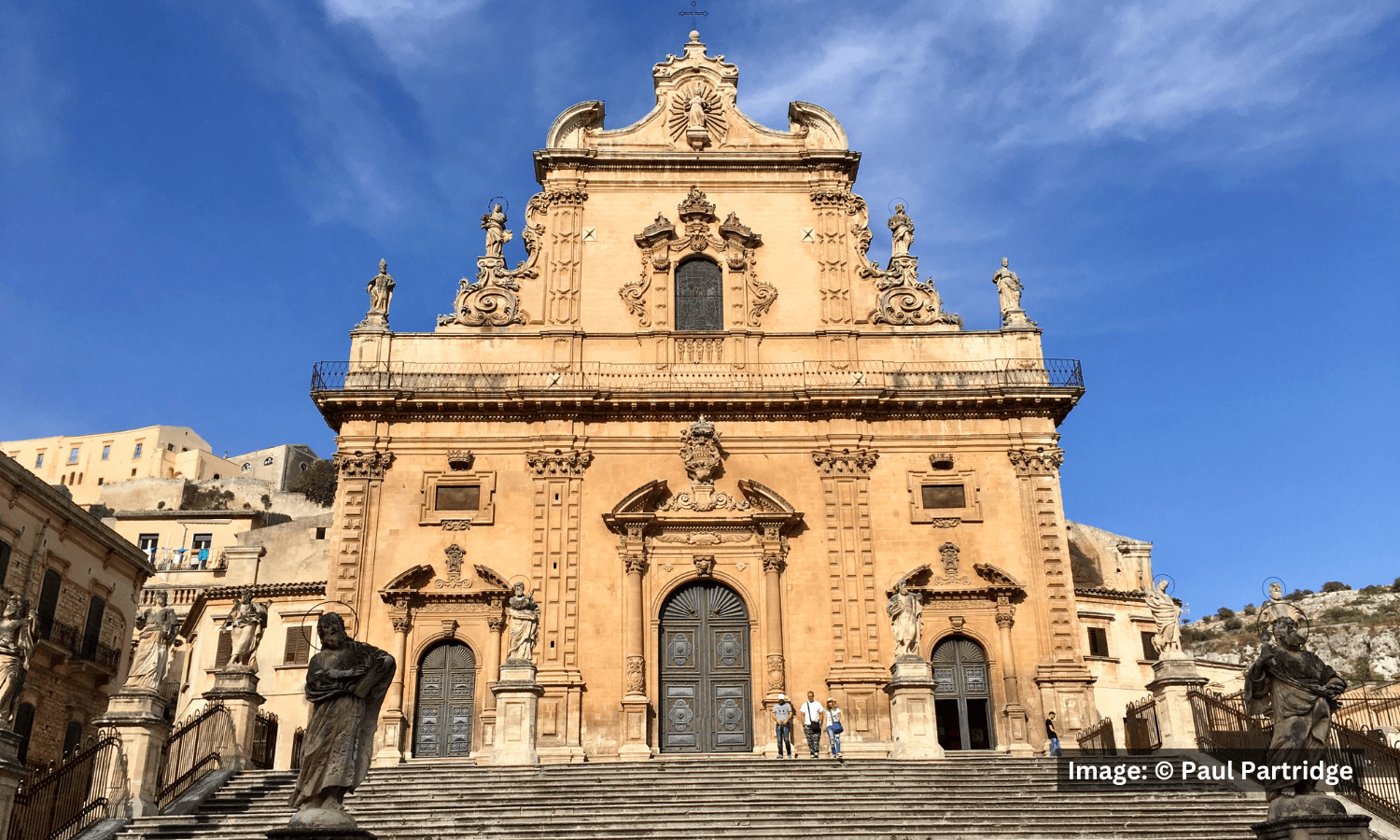Table of Contents
In this article, I share how my family’s 10-day, three-generation heritage trip to Sicily blended history, serendipity, and heartfelt connections—from front-page news in Cammarata to simple joys on an olive farm—while offering tips to help you plan a meaningful heritage journey of your own.
It’s rush hour in Palermo.
I’m in a rental car, gunning a stick shift to keep up with traffic. I glance in the rearview mirror, trying to find the other two cars in our caravan, when
WHOOSH!!
A car whizzes by at 150kph honking the horn.
I say a car, but it’s more like a meatball on wheels.
“Was that a nun?” I ask my wife.
“I’m pretty sure it was.”
“Did she just flip me off?”
“I’m pretty sure she did.”
Welcome to Day One of our three-generation family heritage trip to Sicily. Over the next 10 days, we’ll make front-page news, sip Prosecco at the White Lotus hotel, and sleep in an olive grove. In my 25+ years of planning multi-generational trips, this one was unique.
This guide will show you how to plan a heritage trip that works for everyone from Grandpa (who has mobility issues) to your teenager (who’d rather be at the beach). But first, let me explain why Sicily called us home.
My mother-in-law Marie traces her Sicilian lineage back to Cammarata. For years, there was communication with relatives from “the old country.” Even though that had fallen off, she talked about wanting to visit. Sadly, she developed Alzheimer’s and passed before she could make the journey. Visiting Cammarata for her was the inspiration for our trip.
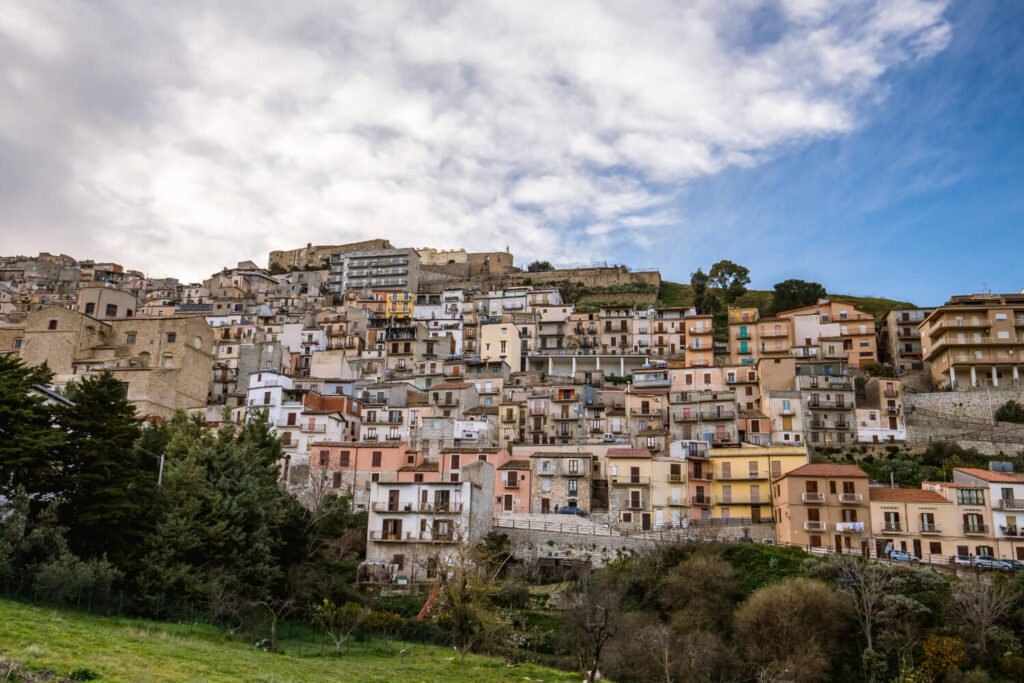
The Seeds of a Heritage Journey
Without knowing it, we’d been doing research on this trip for many years. By listening to Marie and her sisters’ stories about cousins and aunts and uncles, we learned that Cammarata was a medieval mountain town originally founded by Arabs that sits about halfway between Palermo and Agrigento. We’d heard about a town with narrow alleys and baroque churches, with almost all the homes in town facing east towards the valley.
Cammarata would be the nexus for our trip. We would devote a full day there. Where else to go? Since only one of us had been to Sicily before, all three generations had ideas for things they wanted to do.
A vote determined that Agrigento, Taormina, and Cefalù were a must, along with some picturesque towns such as Siracusa and Modica. There was also interest in visiting an Agriturismo (a working farm), especially among the younger generation.
We committed to roughly a day per destination, with the understanding that we’d balance heritage exploration with vacation fun.
The responsibility of fulfilling Marie’s dream weighed on us. This wasn’t just another family vacation – it was a chance to walk the streets she never got to see, to breathe the mountain air she only knew from stories, to connect with a place that had lived so vividly in her imagination.
We wanted everyone to feel that connection, so we started sharing Marie’s stories during family get-togethers. Soon, the teenagers were asking questions about their great-grandparents. The aunts were looking at old photos.
Even I, who had no Sicilian heritage, started practicing Italian phrases. (I tried a language app. One of the first vocabulary words was frog, surprisingly. “Are frogs especially important in Italy?” I asked my wife, who had lived in Italy and wisely decided to ignore my question.) Anyway, by the time we began serious planning, everyone had a personal stake in the adventure.
Making It Work: The Three Keys to Multi-Gen Heritage Travel
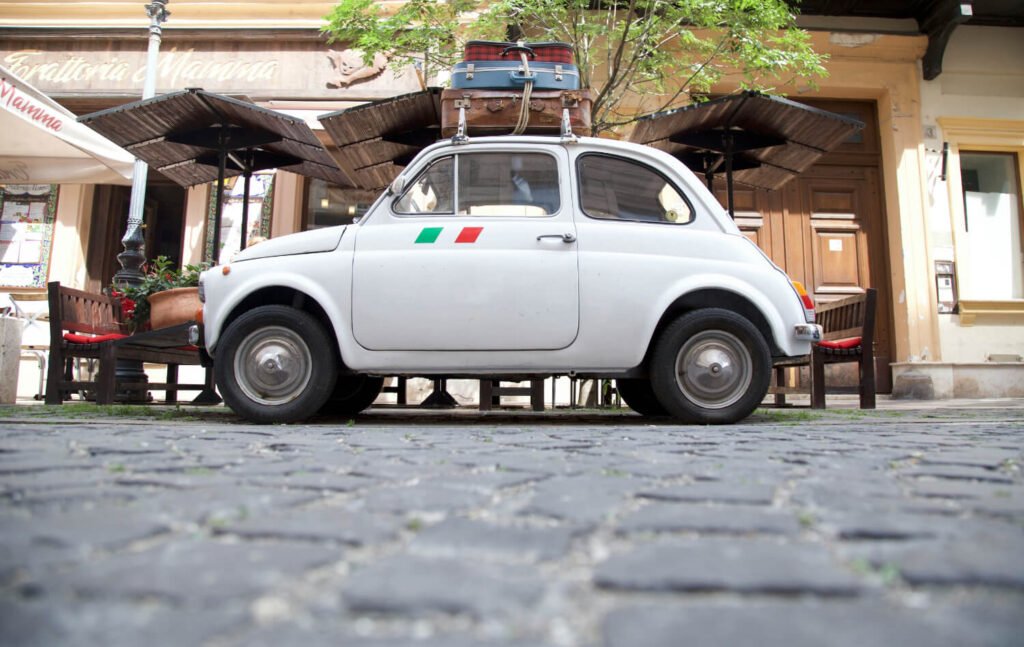
Photo by Karim MANJRA on Unsplash
Key #1: Transportation – Why More Than One Car Makes More Sense
Three times in my life I almost passed out from fear:
1) Walking my daughter down the aisle at her wedding.
2) Negotiating an aerial obstacle course 60 feet above ground in Mont-Tremblant.
3) Driving the highways around Palermo.
I’ve navigated what I thought were challenging driving conditions – Rome, New York City, around the Arc de Triomphe – but they’re child’s play compared to the pandemonium of Palermo. I don’t mean to discourage you from trying. Just know that it takes a Navy Seal mentality to survive. Also, there are very few automatic transmissions available. If you need one, be sure to plan in advance.
In our case, it was further complicated by the fact that we had a three-car caravan. Occasionally we had to pull off the highway and track everybody down. But it was worth it. Having three cars gives maximum flexibility for different groups to pursue divergent activities.
Key #2: Choose Your Home Base
Since most of the places we wanted to visit were in southeastern Sicily, we decided to make our hub there. From previous experience, we were leaning towards renting a villa over getting hotel rooms based on cost and comfort.
A quick check of local hotel prices confirmed it. Paying for six hotel rooms for over a week was more expensive than a luxury villa. And a villa offered more room, more privacy, views, a state-of-the-art kitchen, a private pool, a yard, and indoor and outdoor dining.
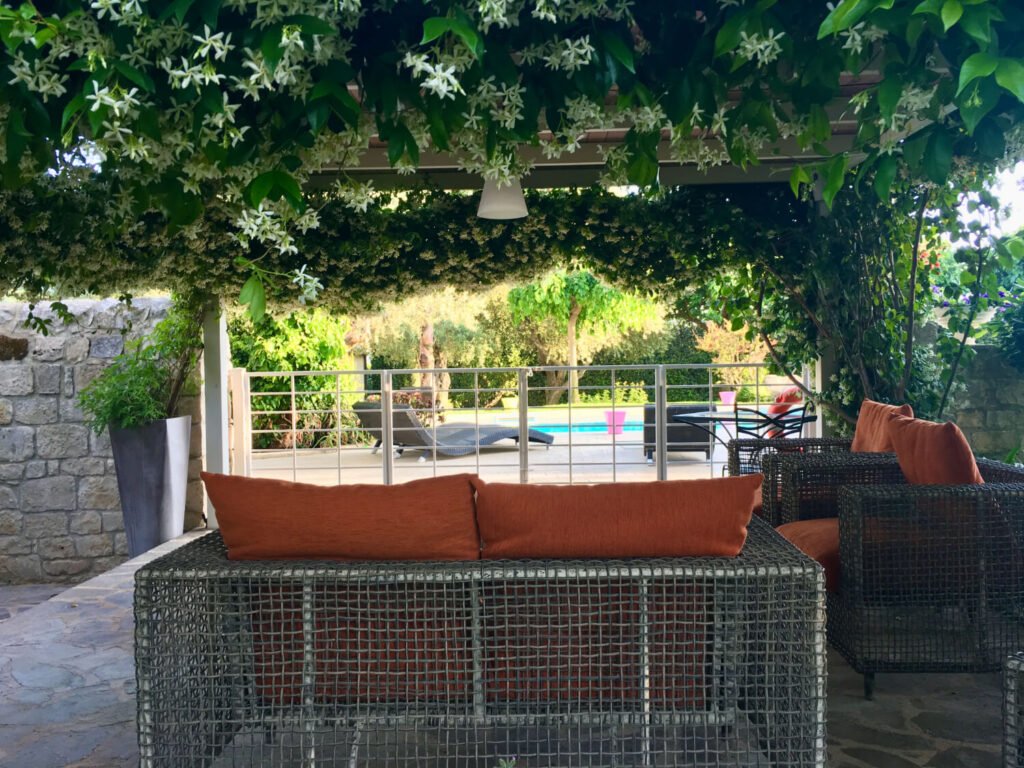
Photo © Paul Partridge
The villa we rented worked perfectly for our needs. I see it’s not currently available, but here are two comparable villas we would have been delighted with.
Villa Oltremare
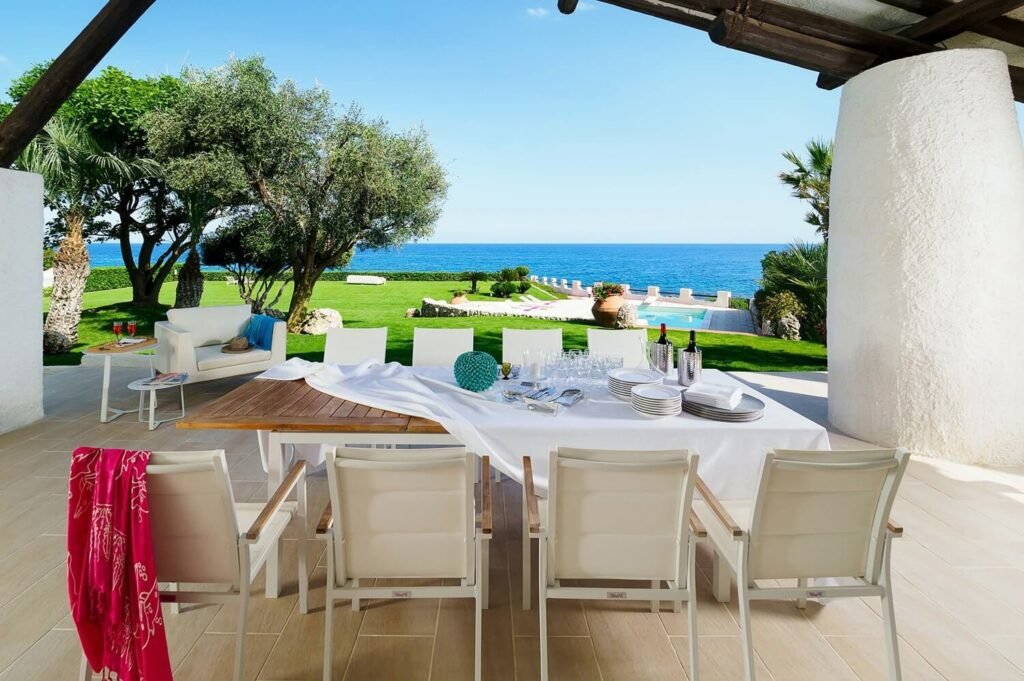
Overlooking the Ionian Sea, Villa Oltremare offers peace, quiet, and privacy. Plus 2 kitchens, manicured gardens, private pool, and a slice of heaven. Siracusa and the Island of Ortigia are nearby.
Sicilian Song
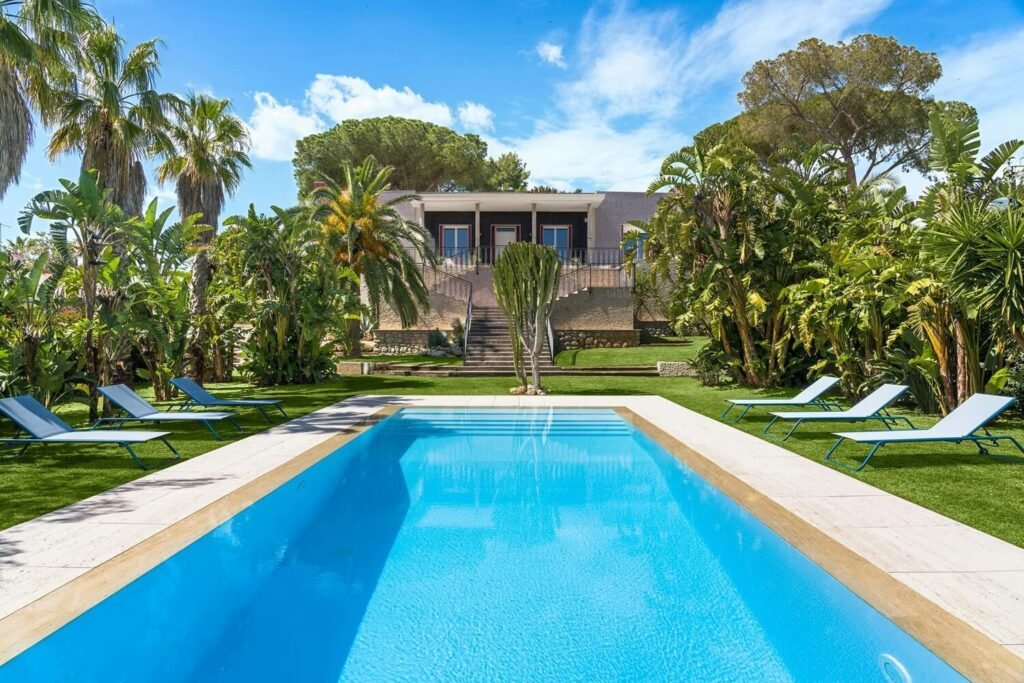
Sicilian Song is a family-friendly sanctuary near Siracusa and Noto. Enjoy the peaceful garden and terraces. Relax by the private pool or at the beach, only 200 yards away.
Key #3: The Art of the Flexible Itinerary
Here’s what we learned about planning a heritage trip: the most memorable moments are often unplanned. Yes, you need an itinerary – but you also need the freedom to abandon it.
Case in point: our day in Cammarata. We had a simple plan – walk around, take photos, maybe find the church where Nonna’s parents were married. Instead, through a series of coincidences that involved our Agrigento guide, the town mayor, and pure luck, we ended up making front-page news in the local paper. (More on that later.)
The key is building what I call a “loose-tight” schedule. Loose enough to follow serendipity when it appears, tight enough to keep everyone engaged. Here’s what worked for us:
- One “anchor” activity per day (Valley of Temples, city tour, beach time)
- Free time in the afternoon for different interests (shopping, pool, wine tasting)
- Group dinners to share discoveries and plan the next day
- A few completely open days for spontaneous adventures (like exploring Cefalù, the furthest point of interest)
The real magic of heritage travel happens in the spaces between planned activities – when your teenager suddenly connects with local farmers making cheese, or your sister-in-law recognizes a family resemblance in a stranger’s face, or you get quality time with your soon-to-be son-in-law.
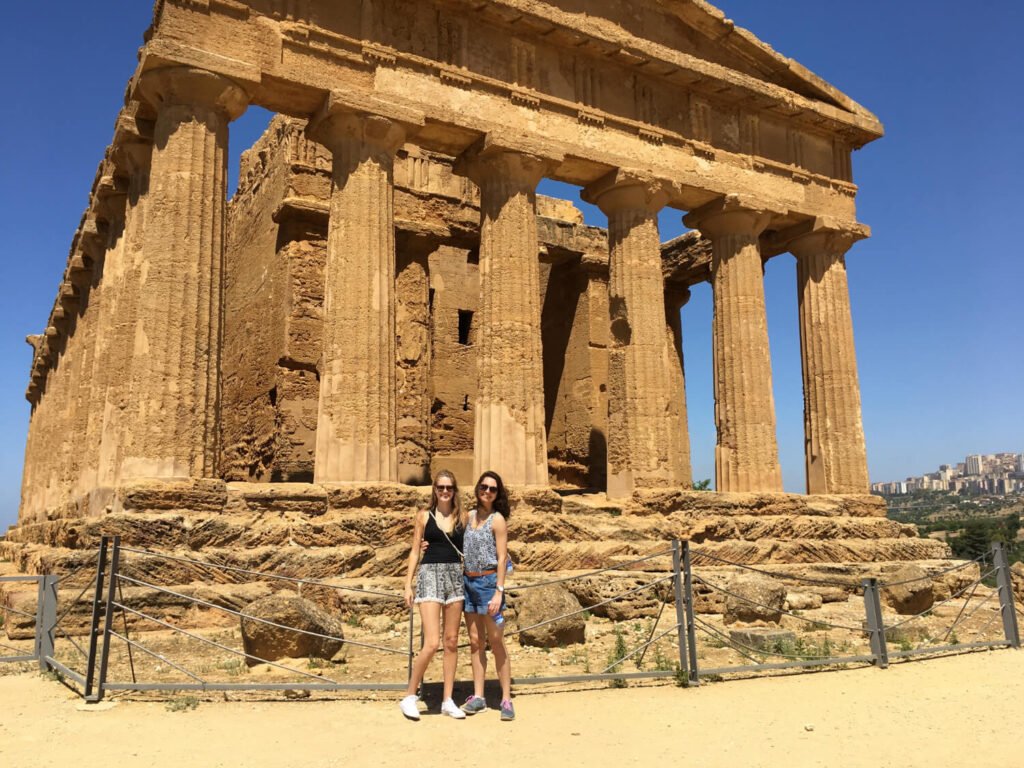
Photo © Paul Partridge
The Most Remarkable Coincidence
Our first full day in Sicily found us at the Valley of Temples in Agrigento. If you’ve never been, it’s seven ancient Greek temples rising majestically against a brilliant blue sky, some of the best-preserved outside of Greece itself. We’d hired a guide named Michele Gallo of Sicily TravelNet, who turned out to be a master storyteller. He had a casual, yet fascinating, way of making history feel immediate and alive.
He shared tales of how the temples survived earthquakes and invasions, pointed out architectural details we would have missed, and brought to life the vibrant ancient city that once stood here.
The next morning, we pointed our caravan toward Cammarata. On paper, the plan was simple: walk around the town, take some photos, maybe find the church where Marie’s grandparents were married. As we wound our way up narrow switchbacks, the excitement built as we were all hoping to experience something special.
We parked near city hall, ready to begin our casual exploration. That’s when Michele, who had insisted on joining us “just because,” broke into a broad smile.
“My friends,” Michele announced with a grin, “I’d like you to meet someone special.” Standing in front of city hall was a welcoming committee: the mayor of Cammarata, Giuseppe Mangiapane, his chief of staff, and a newspaper reporter complete with photographer.
It turns out Michele was acquainted with the mayor. When Michele learned we were planning to visit Cammarata to explore family roots, he couldn’t resist making a call. The mayor was thrilled – he loved connecting American families with their Sicilian roots.
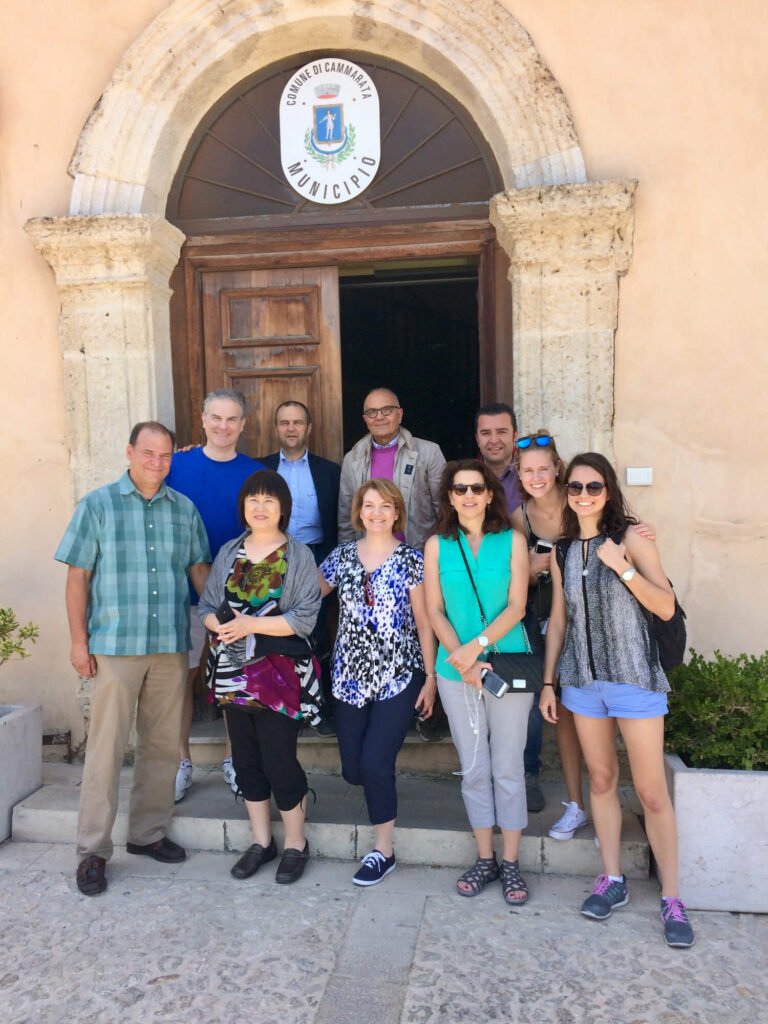
Photo © Paul Partridge
Discovering Family Stories
What followed was no ordinary walking tour. Mayor Mangiapane proudly showed us his office, pointing out historic photos of the town and sharing stories of its rich past, including the Normal castle dating from 1141. As we walked the narrow streets, he explained how Cammarata had evolved from an Arab settlement to a medieval stronghold to the town we saw today.
But the real magic happened when we reached the neighborhood where Marie’s family had lived. The mayor knew every building, every family history. He introduced us to elderly residents who remembered stories about families who had left for America. He pointed out the residence of one of Marie’s departed aunts.
The local newspaper thought our story was front page news. I’m not exactly sure if it was the mayor, the municipal building, the ancient cobblestone streets, or the photographer with the old-time camera flash, but the whole scene felt like we were stepping back in time. And for the first time, we felt truly connected to this place that had lived so long in family stories.
Looking around at three generations of our family – seeing the wonder in their eyes, watching them touch ancient stones that their ancestors had touched – I realized this was exactly the kind of moment Marie had dreamed of experiencing herself.
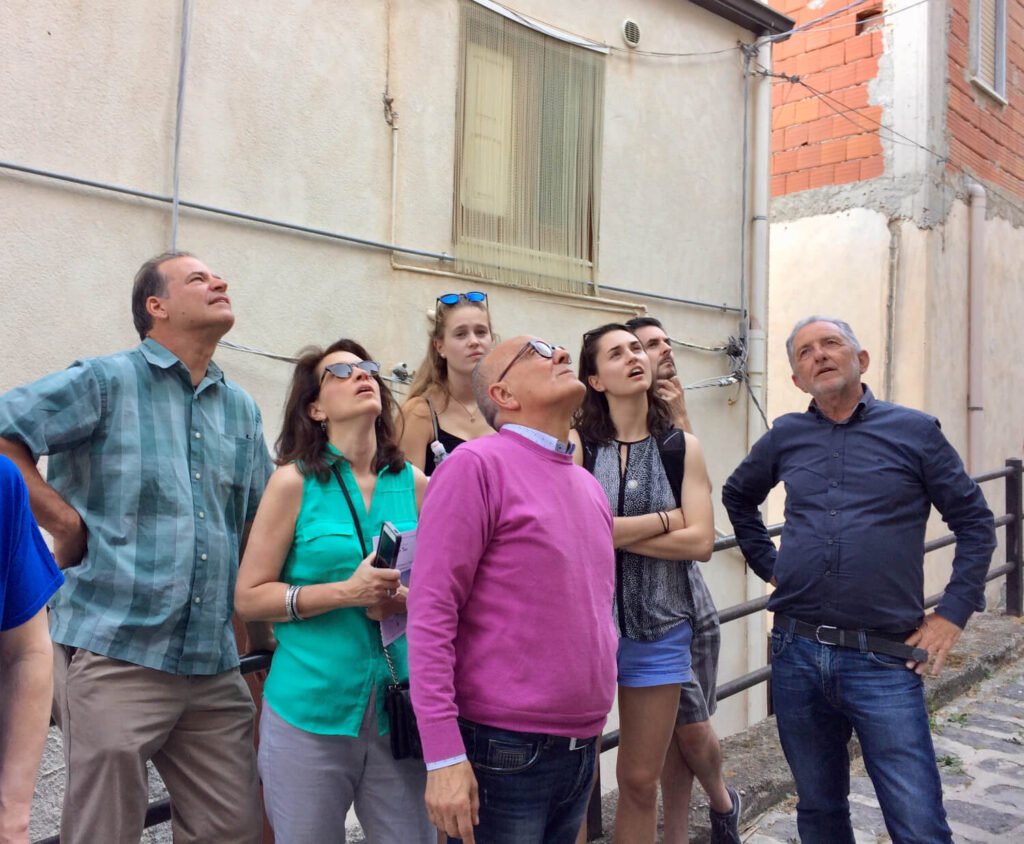
Photo © Paul Partridge
During an elaborate lunch proffered by the mayor, he mourned decades of Cammarata residents moving away due to lack of opportunities. In decades past, the town had relied on salt mine production and then ice storage in the area’s natural caves. With these industries long gone, it’s a challenge to retain citizens. One idea is to collaborate with a local university to attract students and hold cultural festivals to entice visitors.
Cammarata is one of the many Italian towns offering houses for 1 Euro if the buyer agrees to renovate the property and spend time living in town. He asked if we’d spread the word back home. Noting Cammarata’s relaxed vibe and sweeping views of the Sicilian countryside, we promised we would.
From Personal to Grand: Exploring Sicily’s UNESCO Towns
Leaving Cammarata felt like waking from a dream. We’d just experienced something deeply personal – the kind of connection every heritage traveler hopes for. But Sicily had more stories to tell.
Our next chapter would take us to the southeastern corner of the island, where five UNESCO World Heritage towns awaited: Ragusa, Modica, Scicli, Noto, and Siracusa. Each rebuilt in spectacular Baroque style after a devastating 1693 earthquake, these towns are like pages from a storybook, all golden limestone and ornate balconies.
Ragusa: We started in Ragusa, which is two towns in one. There’s Ragusa Ibla (the old town) and Ragusa Superiore (the new town), separated by a deep valley. Our first view of Ibla, tumbling down the hillside like a wedding cake made of stone, literally stopped traffic – all three cars in our caravan pulled over to take photos.
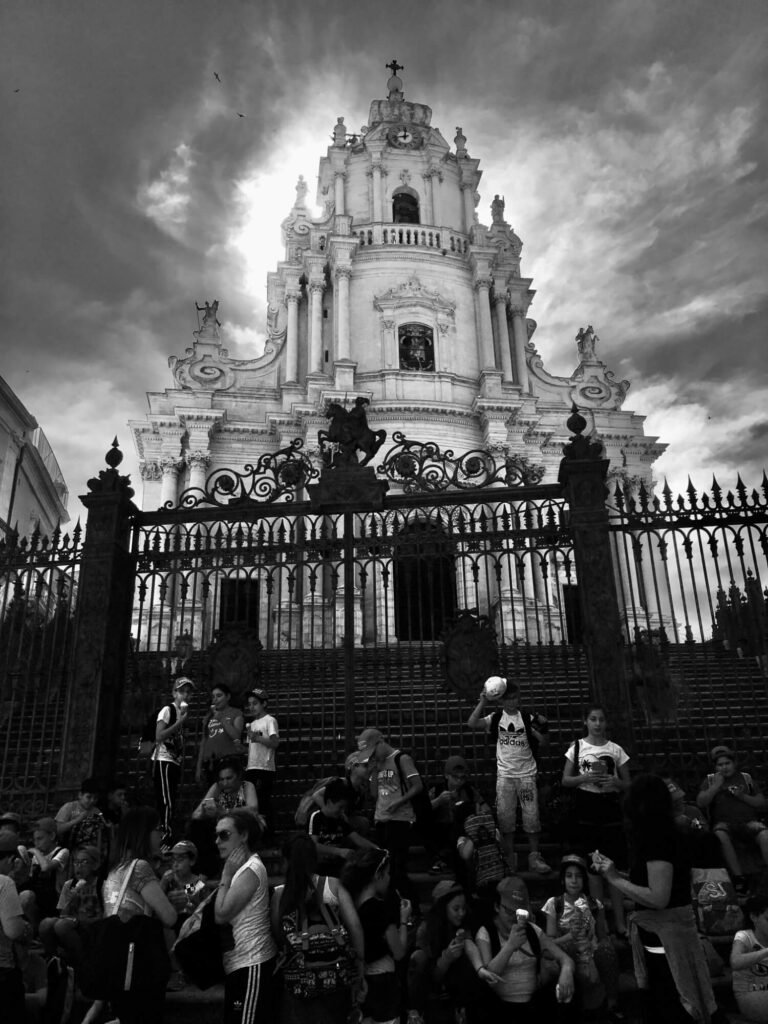
Photo © Paul Partridge
Modica brought out everyone’s inner child. The town is famous for its chocolate, made the same way the Aztecs taught the Spanish in the 1500s. Some of us may have exceeded our Recommended Dietary Allowance of chocolate at Antica Dolceria Bonajuto, Sicily’s oldest chocolate shop founded in 1880. But no regrets.
Noto: Noto’s historic center is crafted from local limestone that glows golden in the afternoon sun. The Palazzo Nicolaci features what might be Sicily’s most photographed balconies – seven wrought-iron masterpieces supported by prancing horses, cherubs, and winged lions. The bulging wrought iron railings that decorate the balconies (called “goose breast”) were made to accommodate the large dresses of the rich signore who faced the street.
Scicli: Charming Scicli is where the popular TV series “Inspector Montalbano” was filmed. Here, we discovered why these towns are sometimes called “The Garden of Stone.” Every balcony is a work of art, supported by theatrical masks, stone gargoyles, and other fancy baroque flourishes. The church of Santa Maria della Croce sits high above the town and makes for a great sunset spot. (Note: it’s open on alternate mornings and afternoons, so check the schedule before visiting.)
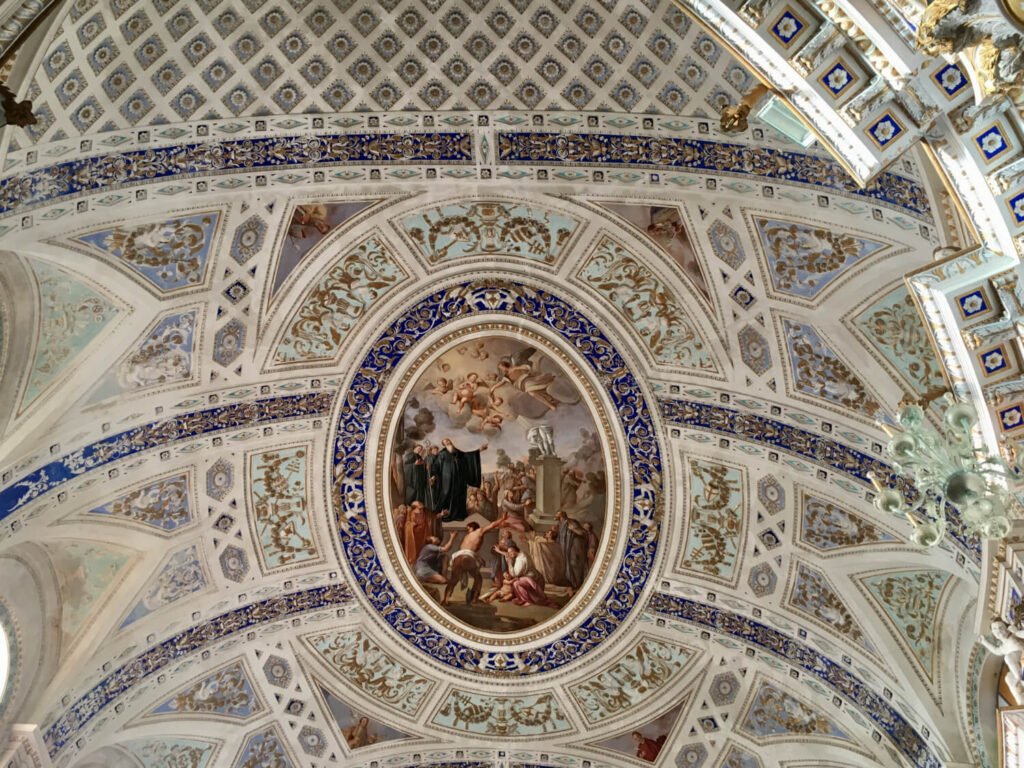
Photo © Paul Partridge
Siracusa: Once the most powerful city in the ancient world, Siracusa today is a fascinating blend of Greek, Roman, medieval, and baroque influences. The heart of the city is Ortigia, a small island connected to the mainland by two bridges. The Neapolis archaeological site has some of the best-preserved Greek ruins in Italy. The lively morning market is a feast for all senses, with vendors calling out in Sicilian dialect while displaying fresh swordfish, blood oranges, and local cheeses.
The White Lotus Life: La Dolce Vita in Taormina
If the UNESCO towns represent Sicily’s baroque soul, Taormina embodies its glamorous heart. Perched on a cliff with Mount Etna looming in the background, this resort town has drawn celebrities and aristocrats for over a century.
Thanks to my wife’s business connections, we got a behind-the-scenes tour of the San Domenico Palace, a 14th-century monastery turned luxury hotel. You might recognize it as the setting for season two of “The White Lotus.” The original monastery’s cloistered courtyards and vaulted corridors now lead to $2,000-a-night suites. Sipping Prosecco on the terrace, overlooking the Ionian Sea, it was easy to see why this spot has attracted luminaries from Greta Garbo to Michael Jordan to Tom Cruise, as well as presidents, royalty, and the G7.
But the real Taormina exists beyond the luxury hotels. We found it in the ancient Greek theater, still hosting performances after 2,400 years. In the quiet garden of the Villa Comunale. In the tiny shops along the Corso Umberto where artisans craft ceramics and puppets just as their grandparents did.
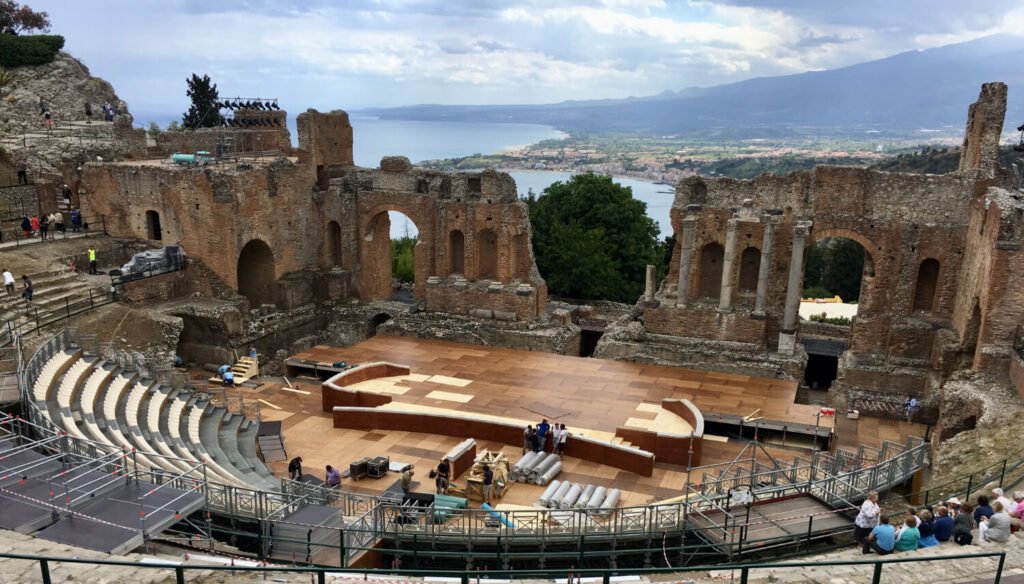
Photo © Paul Partridge
On to Cefalù
After the glitter of Taormina, a small contingent drove north to Cefalù, about 140 miles from our villa in southeastern Sicily. Given the distance, we planned an overnight stay – though our chosen hotel proved less than memorable (another win for villas!).
Cefalù is a popular coastal town on the northern shore of Sicily. It sits in the shadow of a large rocky promontory called La Rocca (great views from here). Originally a medieval fishing village, today it’s more of a beach town with a famous Arab-Norman Cathedral, the Cattedrale di Cefalù (a UNESCO World Heritage Site). Its twin towers have stood sentinel over the town for nearly 900 years. Inside, Byzantine mosaics shimmer in the filtered light.
Although I’m glad we saw it, Cefalù wasn’t as high on my list as the other towns we visited. Probably because we pushed ourselves too hard, got tired and hungry, and had trouble finding a restaurant that could seat us due to the weekend crowds.
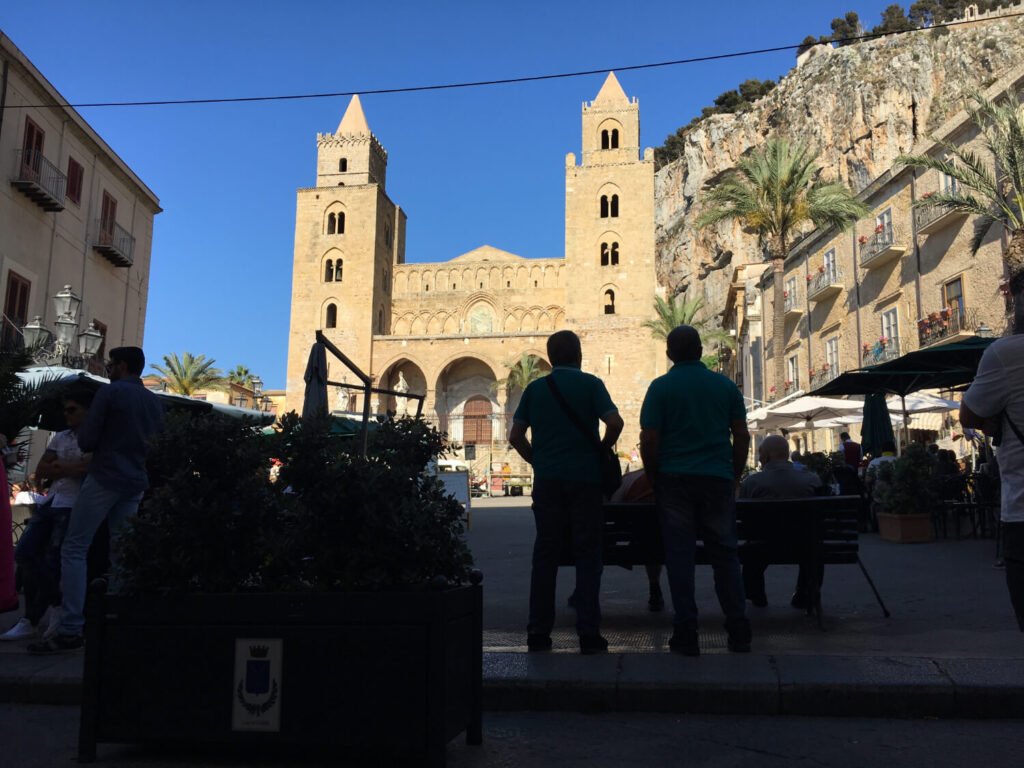
Photo © Paul Partridge
Villa Romana’s Stunning Mosaics
On our way back south, we made one final cultural stop: Villa Romana del Casale (Piazza Armerina). After the crowds and confusion of Cefalù, these spectacular mosaics were exactly what we needed. UNESCO calls these “the finest mosaics of the Roman world.” The perfectly preserved 4th-century floor tiles depict everything from chariot races to hunting expeditions to the famous “Bikini Girls” – young athletes competing in sports. These vivid snapshots of Roman life captivated every generation in our group.
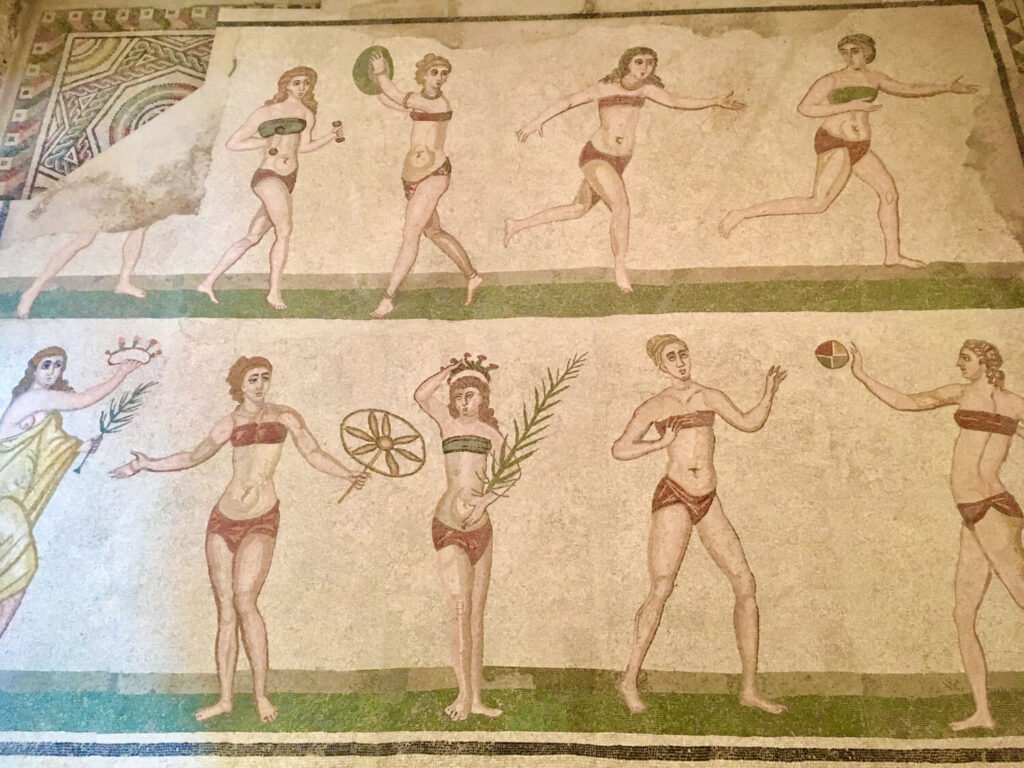
Photo © Paul Partridge
Life Lessons at the Olive Farm
If you’ve never heard of an Agriturismo, think of it as Italy’s version of agricultural tourism – a working farm that welcomes guests to experience farm life firsthand. Our final adventure brought us to La Rosa dei Venti in Enna, an olive farm where our family would spend two days with a Sicilian farming family.
The teenagers were excited. There were horses to ride, donkeys to feed, geese to gather, and farm kids eager to show them around. The adults found themselves mesmerized by the hilltop views and fascinated by the ancient art of olive cultivation – walking the groves, learning about harvest cycles, and visiting the consortium where the olives are pressed and stored.
To be clear, this is not like visiting a swanky dude ranch where dinner is served on fancy china and even the horses have trust funds. This is a real-life working farm – in all its glory. The rooms are simple but comfortable. And it’s a window into a way of life that has sustained Sicilian families for centuries.
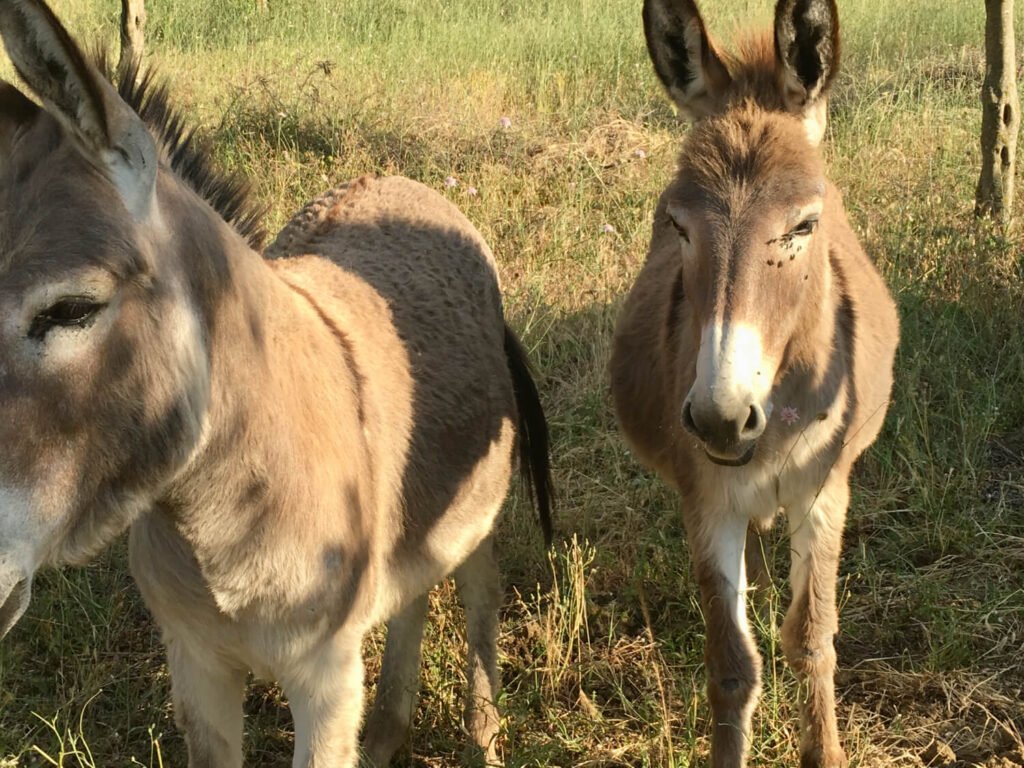
Photo © Paul Partridge
At dinner, our husband-and-wife hosts explained their olive operation. The family tends over 1,000 trees, some centuries old. Each October, they harvest by hand using long poles to gently knock the olives onto nets spread beneath the trees. The olives must be pressed within 24 hours of picking to ensure the highest quality oil.
“You must come back for the harvest,” signora insisted, explaining how the whole community joins in. “It’s like a festival – we work hard all day, then feast and celebrate at night.” Our teenagers, looked up with interest. “Can we really come back?” their eyes said.
As we shared meals with our hosts, watching our kids play with theirs (helpful that our daughter speaks Italian), it felt like we may have found the soul of Sicily.
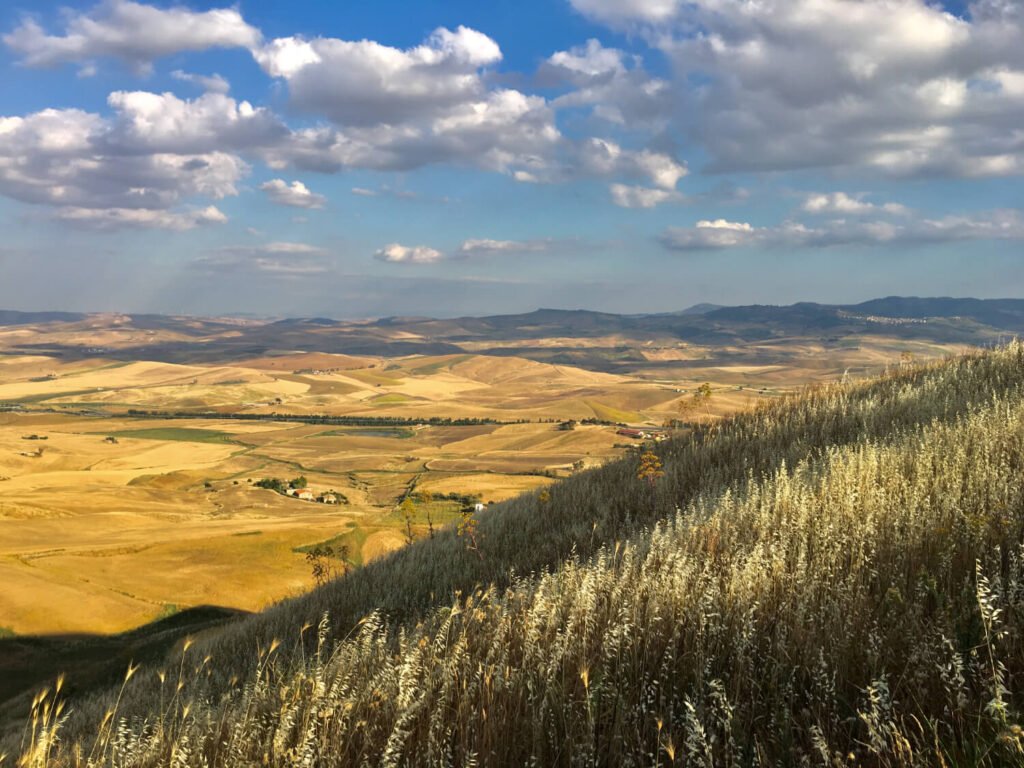
Photo © Paul Partridge
Heritage Travel: A Family Journey Comes Full Circle
Our last evening at the olive farm, watching the kids chase fireflies, I thought about what heritage travel really means. We’d come to Sicily seeking family roots in Cammarata. What we found was so much more.
The perfect moments weren’t always where we expected to find them. Sometimes they were in a mayor’s office, poring over century-old records. Sometimes they were at a farm dinner table, sharing stories across generations. And sometimes they were in those unplanned spaces between activities – when a teenager connected with a local artisan, or someone spotted a familiar family gesture in a stranger’s hands.
Different generations found different paths to Sicily’s heart. The kids bonded with farm animals and made friends despite age differences. History buffs discovered context for family stories. Wine lovers learned new varietals. But somehow, Sicily found a way to speak to each of us.
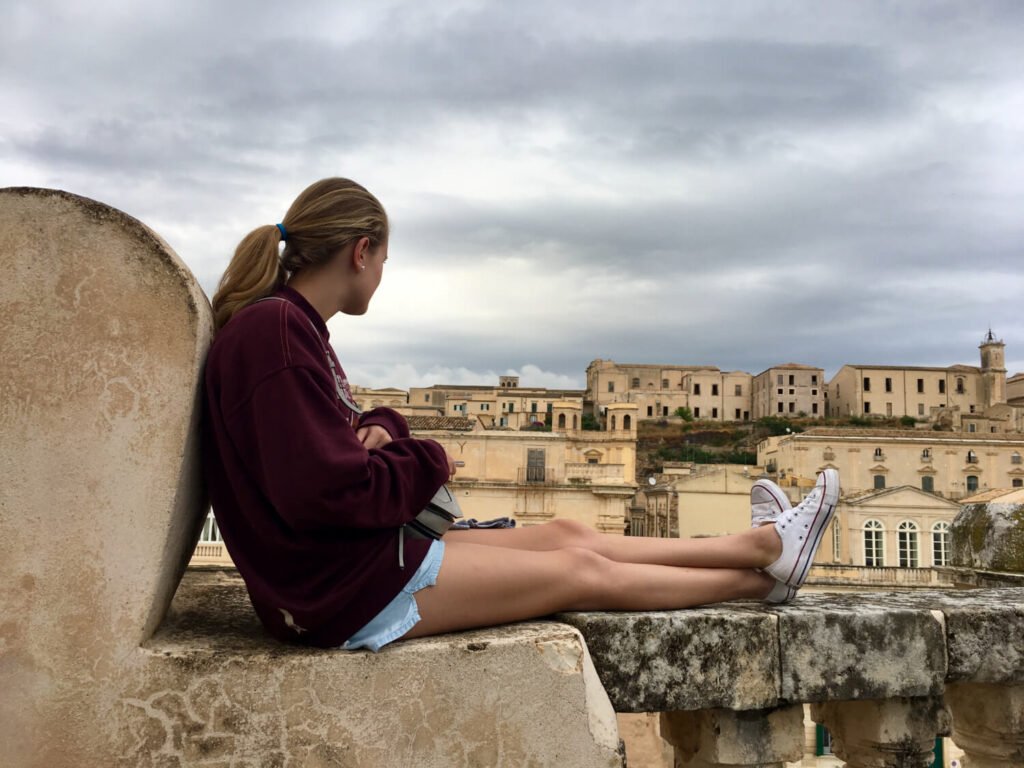
Photo © Paul Partridge
Marie’s spirit touched every part of our journey. She would have loved seeing her grandchildren in the streets where her parents played. She would have delighted in the farm family’s warm welcome. And she definitely would have appreciated that invitation to return for the olive harvest – a promise of future connections and new chapters in our family’s Sicily story.
We came looking for roots. We found them, yes, but we also found branches reaching toward tomorrow. Maybe that’s what heritage travel is really about – not just discovering where you’re from, but understanding who you are, and imagining who you might become.
Life’s special moments deserve special settings and extraordinary experiences. Through years of planning heritage journeys, milestone celebrations, and family reunions, I’ve seen how the right combination – a perfectly matched villa, a dedicated concierge, and meaningful local connections – can transform a family gathering into something magical. The kind of magic that creates stories you’ll share for generations. The kind of stories Marie would have loved to hear.
Protecting Your Family’s Special Moments
When three generations are counting on you to create a perfect family experience, you can’t risk disappointment. Unlike do-it-yourself rental sites where properties aren’t vetted and you’re stressed over whether reality will match the online photos, each villa TravelVilla Guide recommends is meticulously inspected across 60 different criteria. No unwelcome surprises, no scrambling to reach property owners if issues arise.
Instead, your dedicated concierge handles everything – from arranging unique experiences to ensuring every detail meets your expectations. You’re free to focus on what matters most: creating those once-in-a-lifetime memories together.
Ready to create your own heritage journey? TravelVilla Guide helps transform your family’s special occasion with the perfect combination: a beautiful villa in a stunning location, immersive experiences customized to your group, and dedicated concierge service to ensure every detail is perfect.
Frequently Asked Questions (FAQs)
What is a family heritage trip, and how is it different from a regular vacation?
A heritage trip goes beyond sightseeing—it’s about connecting with your family’s roots, culture, and traditions. Unlike a typical vacation, the focus is on visiting ancestral towns, meeting locals, and weaving family stories into the travel experience.
How do you plan a trip that works for multiple generations?
The key is balance. Choose a comfortable home base (like a villa) where everyone can gather, then plan one “anchor” activity each day with flexibility for different interests. Mixing in downtime helps grandparents, parents, and kids all enjoy the journey without feeling rushed.
How do we keep kids and teens engaged on a heritage trip?
Keep it varied—mix cultural or historical stops with hands-on activities like cooking classes, farm visits, or beach time. This balance of fun and learning keeps younger travelers curious and makes the trip enjoyable for all generations.
How can I make a heritage trip meaningful even if I don’t speak the local language?
You don’t need to be fluent to connect. Learning a few simple phrases, hiring a local guide, or working with a concierge service can bridge the gap. Locals usually appreciate the effort, and those small gestures often lead to genuine, memorable interactions.

